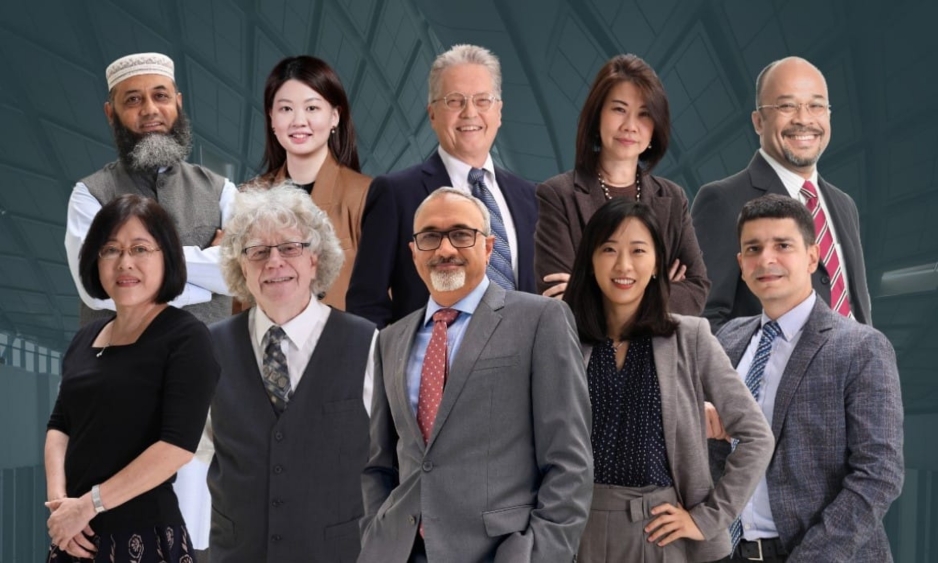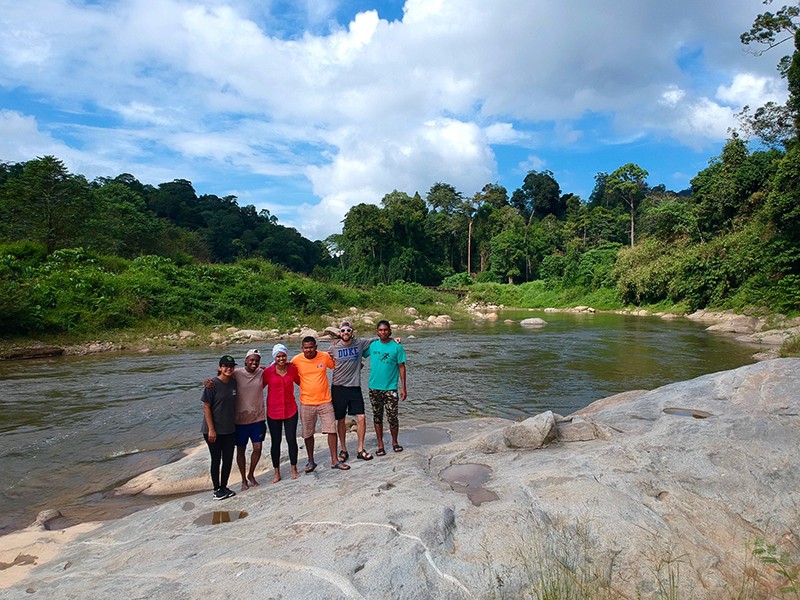When I woke up in the middle of a rainforest one month into the MBA program, I knew this wasn’t going to be the typical business school experience. For my first Action Learning project at Asia School of Business, three of my classmates and I worked closely with the Orang Asli, Malaysia’s original inhabitants, in the Belum-Temengor rainforest. While the Orang Asli had no problem living off the rainforest in the past, recent increases in poaching, pollution, and illegal logging have threatened their way of life.
Working alongside our host organization, Yayasan EMKAY, we were there to design a business that would benefit the Orang Asli. Considering only one of us spoke Bahasa Malaysia and none of us had ever been to the rainforest, it was destined to be a tough challenge.
The Brains at BRainS
Our first week in Belum coincided with the second ever Belum Rainforest Summit (BRainS). Our team had the chance to meet an amazing group of people who were experts in a wide range of fields such as tiger conservation, sustainable eco-tourism, and rainforest genetics. The Summit taught us two important lessons:
- We’re not experts in most areas and that’s normal.
- When you’re not an expert, find somebody who is and steal as much of their time as possible.
With only four weeks to create a business from scratch in an unfamiliar environment, access to experts and their wealth of knowledge was crucial to our project’s success. One of our most informative meetings was with professor Kamal Solhaimi from the University of Malaya, who had spent over 20 years working with the Orang Asli on various projects.
Kamal informed us that tour groups who visit the villages do not treat the Orang Asli with respect and view them as “another tourist attraction in the rainforest.” This caused many people in Semelor to view outsiders as untrustworthy and it became clear that we would have to work hard to gain their trust.
Facing Challenges
For social impact projects around the world, two of the most significant challenges are defining the scope of the project and managing a diverse set of stakeholders. Our project with the Orang Asli was no different. We started our project with the broad goal of finding a sustainable source of income for the Orang Asli. After several brainstorming sessions, we came up with dozens of approaches ranging from setting up a Conservation Fund to selling honey from stingless bee farms.
We then analyzed the various options for their feasibility and degree of impact, deciding to establish an eco-tourism package for Belum visitors.One of the most important things we learned from the scoping challenge was that our project didn’t have to save the world.
While building 10 schools and getting the entire rainforest protected as a UN Heritage site would have been great, we didn’t have the time or resources to achieve such lofty goals. A step in the right direction is better than no step at all. Small wins can lead to bigger wins. To say our set of stakeholders was diverse is an understatement. When developing our business plan we worked with a nonprofit organization (Yayasan EMKAY), a for-profit business (Belum Rainforest Resort), a government agency responsible for Orang Asli development (JAKOA), and the indigenous village of Semelor. Each group had their own desires, opinions, and restrictions.
After experiencing firsthand the complexities involved in getting so many different organizations to agree with each other, our team was able to see how difficult social impact projects can be. Despite this formidable challenge, there were many signs that our project was having a significant impact and we were excited to see the project implemented by Yayasan EMKAY.
Memorable Moments
While it’s difficult to narrow down the best moments from our project, there were two experiences that seemed to stick out from the rest that involved a blow-dart gun and a single sheet of paper. The first promising experience for our project came during our second onsite when we spoke with the Orang Asli about the potential for an eco-tourism experience in Semelor. While they had some reservations about the logistics and how often guests would be coming, the idea was met with excitement.
So much excitement, in fact, that the next time we went to Semelor the Orang Asli walked us through tourist activities that included learning to shoot a blow-dart gun, tapping a rubber tree, and cooking rice and chicken inside a bamboo stalk. We even built a campfire and stayed the night in one of the village chalets. We were proud that we had managed to gain the trust of a people that didn’t even speak our language in such a short period of time.
The best moment of the entire four weeks, however, came on our third onsite visit when one of the village leaders showed us a printed “pricing sheet” for the eco-tourism packages. While a single sheet of paper might not seem like a big deal, it was the process behind the pricing sheet that really mattered.
To produce a physical copy of the pricing sheet, village leaders had to discuss and agree on a pricing structure, travel an hour and a half to the nearby town of Gerik to print the pricing sheet, and prepare to explain it to us upon our return to Semelor. Although past projects with the Orang Asli had mixed results due to a lack of engagement, this single sheet of paper proved that they had bought into our plan and were ready to execute.
Saying Goodbye
When it came time to say goodbye during our last morning in Semelor, it was bittersweet for our team. While we were proud of the relationships we formed and the plan we had put in motion, we felt as though we could work on the project for another few months and have an even larger impact.
We felt lucky be part of such an amazing Action Learning project. Now, we are already in the midst of planning a return trip to Semelor to spend another night in the rainforest, this time with some old friends.







